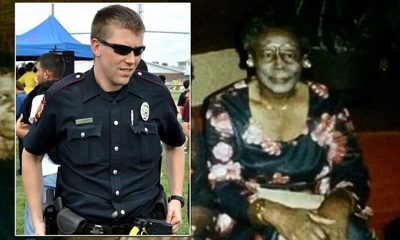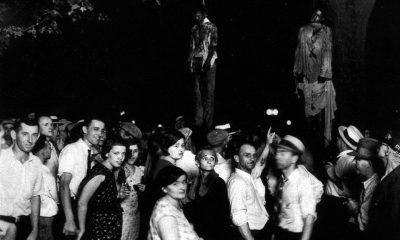Belize
Belize


Belize, a small but attractive country on the northeastern coast of Central America, with a history as rich and varied as its verdant scenery. The history of Belize includes a rich tapestry of indigenous cultures, colonial influences, and a heritage of perseverance, stretching from ancient Mayan civilizations through European colonialism and the fights for freedom. From its prehistoric beginnings to the modern day, the history of Belize is explored in this in-depth article.
Long before European explorers arrived, the ancient Maya civilisation had established itself in the area that is now Belize. Between 2500 B.C. and 1500 A.D., the Maya constructed a large number of city-states across the region, each one replete with great architectural wonders including pyramids, temples, and extensive agricultural networks. Caracol, Lamanai, and Xunantunich are just a few of the significant Mayan ruins in Belize that attest to the Maya’s sophisticated culture, astrological acumen, and creative brilliance.
The entrance of European explorers in the 16th century and the subsequent Spanish rule ushered in a new era in Belize’s history. Christopher Columbus claimed the coast for Spain on his voyage in 1502. The Spanish, however, ignored Belize in favor of conquering other countries. During the 17th century, British buccaneers came to Belize looking for safety and a place to set up shop. They were instrumental in developing the country’s logwood and mahogany commerce with the European superpowers.
After the Treaty of Madrid in 1670 gave the British control of the area, it was settled by Brits and given the name British Honduras under the reign of the Baymen. The prosperous timber sector of the 18th and 19th centuries fueled the growth of British settlers, sometimes known as Baymen. In the face of Spanish and French attempts to regain power, these colonists fought battles like 1798’s St. George’s Caye. The fortitude of the Baymen paved the way for Belize’s modern sense of national identity and the country’s subsequent move to self-governance.
The Fight for Freedom from Colonialism:
British Honduras remained a British colony under a variety of administrations during the 19th and early 20th century. Agriculture, notably sugarcane and banana production, replaced the forestry industry as the main economic driver. In the middle of the twentieth century, leaders such as George Price and Philip Goldson sparked a wave of support for nationalist ideals. A name change to Belize in 1973 preceded the country’s formal declaration of independence on September 21, 1981.
The current government of Belize has taken bold steps toward democracy, cultural tolerance, and ecological sustainability since the country’s independence. The country’s tourist boom may be attributed to its many attractive natural features, including as its beautiful coastline, verdant woods, and wide variety of species. Protected areas, national parks, and animal sanctuaries cover a sizable amount of Belize’s landmass since protecting the country’s natural heritage is a top priority for the government.
Ancient civilizations, European colonization, and a dogged drive for freedom have all left their marks on Belize’s fascinating history. Belize is a symbol of the fortitude and cultural blending that define Central America, from its impressive Maya ruins to the rich tapestry of ethnicities that define the country today. Belize is a place that welcomes exploration of its past and immersion in its present because it honors its heritage while protecting its natural beauty.
The specter of racism has been a constant difficulty for Belize. The purpose of this essay is to give a comprehensive examination of racism in Belize, illuminating its origins, expressions, and current responses.
When European forces, most notably the British, gained a foothold in the region during the colonial era, racism in Belize took root. British settlers began arriving in what was then known as British Honduras in the 17th century, bringing with them a hierarchical and discriminating way of thinking.
During this time, the British established a racial hierarchy that placed a premium on anyone who could trace their genealogy back to Europe. They established a hierarchy that separated the white upper class from the free people of color and the African slaves. This schism paved the way for years of racial intolerance and inequality.
The system of slavery had a profound effect on the racial make-up of Belize, as will be discussed in this article. Africans were imported to British Honduras as slaves to work in the country’s sugar cane fields, logging camps, and other physically demanding occupations. Because of slavery, racial prejudices and class distinctions have persisted for centuries.
Slavery was abolished in British Honduras in 1838, but its effects on Belize’s culture, economy, and government persisted for decades afterward. There was a continuation of racial inequality since formerly enslaved people faced several obstacles, such as a lack of access to education, property ownership, and economic prospects.
Belize is home to several indigenous groups in addition to the African diaspora, including the Maya, Mestizo, and Garifuna. Historically, these communities have been at the receiving end of oppression, racism, and xenophobia.
The Garifuna people are a unique Afro-Indigenous group that has been marginalized and discriminated against for decades. Historically, they have been discriminated against and excluded from mainstream society, putting them at a socioeconomic disadvantage. However, the Garifuna people have battled for their rights and cultural preservation, which has led to greater appreciation of their history in Belizean culture.
While progress has been made in Belize to eliminate racial discrimination, it still exists in modern forms. Discrimination based on race, ethnicity, and socioeconomic position persists in many areas of life, including as the classroom, the workplace, the hospital, and the police force.
A large segment of Belizeans live in Creole and mestizo communities, although they confront many obstacles to advancing socially and economically. Maya and other indigenous tribes have fought for decades to protect their territory from outside development.
Bway, Gyal, Mi, Yu, De, Da, Weh, Noh, Wahn, Pan, Dey, Eena, Di, Suh, Bex, Ting, Mek, Gweh, Yuh, Waan, Ketch, Haul, Lata, Bak, Dung, Up, Haad, Lik, Chop, Jook, Mawnin, Nite, Pikni, Bex-up, Muma, Papa, Gran, Sista, Broda, Cousin, Nyam, Bakra, Fiya, Chupid, Cowt, Nansi, Haste, Wehda, Peeple, Weyt, Diwet, Bus, Bill, Bakside, Tings, Bacra, Dash, Skin, Kuf, Layk, Blow, Upstairs, Dalla, Bed, Senda, Lef, Roun, Sin, Pass, Slap, Drum, Tinga, Chue, Kiba, Short, Whip, Fas, Hurt, Tawk, Cross, Creap, Play, Tell, Smile, Miss, Strit, Bring, Meet, Feva, Hol, Wok, Fraid, Spat, Run, Fool, Sit, Stand, Jump, Swim, Fish, Drik, Bake, Walk, Nyoo, Hand, Hear, Beat, Dance, Hole, Bad, Feel, Bax, Sos, Town, Countri, Bash, Missus, Mister, Gawn, Pudden, Husban, Wief, Fun, Stown, Jyooce, Talk, Sweet, Fruit, Salt, Rice, Bean, Cof, Sog, Mout, Teet, Clik, Tung, Hearin, Cyaan, Lyin, Sittin, Livin, Reash, Cuss, Loaf, Grin, Stink, Chop, Swalla, Tek, Damb, Ribba, Gost, Runnin, Dig, Beet, Bat, Bow, Wave, Sign, and Blak

-

 States2 weeks ago
States2 weeks agoPearlie Golden 93-Year-Old Black Woman Shot By Texas Cop
-

 States2 weeks ago
States2 weeks agoTragedy Unveils Racial Tensions Tarika Wilson Story
-

 States2 weeks ago
States2 weeks agoLayers Of Racial Tension The Mario Woods Tragedy And San Francisco Path To Justice
-

 States2 weeks ago
States2 weeks agoLynching Of Thomas Shipp Tragedy Of Racism Echoes Through History
-

 States2 weeks ago
States2 weeks agoThe Killing Of Terence Crutcher And The Fight For Racial Justice

















You must be logged in to post a comment Login